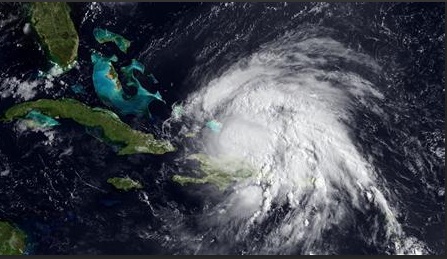 Even as the first hurricane of the 2011 Atlantic season pounded the Turks and Caicos Islands and the southeast Bahamas with battering winds and rain and dangerous storm surge, coastal residents in Florida and the Carolinas were preparing for Irene's approach.
Even as the first hurricane of the 2011 Atlantic season pounded the Turks and Caicos Islands and the southeast Bahamas with battering winds and rain and dangerous storm surge, coastal residents in Florida and the Carolinas were preparing for Irene's approach.
Irene is the ninth named storm of the busy June-through-November season and looks set to be the first hurricane to hit the United States since Ike pounded the Texas coast in 2008.
It weakened on Tuesday to a Category 1 hurricane on the five-step Saffir Simpson scale of intensity, but could strengthen into a major Category 3 storm with winds over 111 miles per hour (178 km per hour) by Thursday, the Hurricane Center forecasters said
While warning the entire U.S. East Coast to be on the alert, Federal Emergency Management Agency Administrator Craig Fugate and National Hurricane Center Director Bill Read said it was too early to be certain where Irene would directly hit the coastline.
"We're going to have a very large tropical cyclone move up the Eastern Seaboard over the next five to seven days," Read said on a conference call in which he spoke along with Fugate.
The "best guess" forecast was that it would approach the coast of the Carolinas on Saturday morning as a major storm of Category 3 or upward, Read said.
After that, the already saturated New England region of the East Coast could also be at particular risk for torrential rains, high winds and flooding from Irene, Fugate said. Major eastern cities like Washington and New York could feel some impact from Irene, the forecast indicated.
In a separate development, a magnitude 5.9 earthquake struck the U.S. East Coast, shaking Washington, New York and other cities.
Irene could put a damper on Sunday's dedication ceremony for the new memorial honoring civil rights leader Martin Luther King Jnr. on Washington's National Mall. Tens of thousands of people, including President Barack Obama, were expected to attend.
Forecasts showed Irene posing no threat to U.S. oil and gas installations in the Gulf of Mexico.